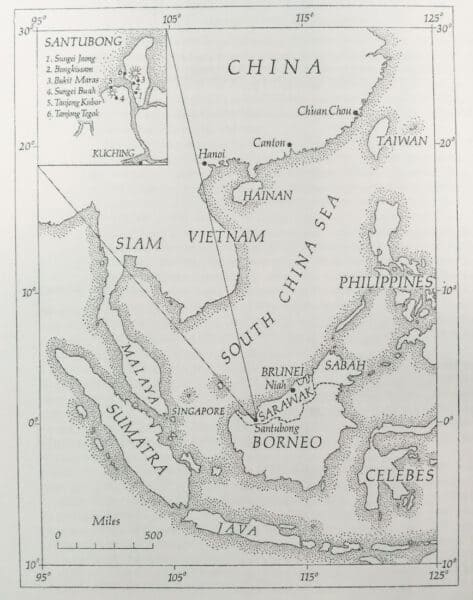
via Kuching In and Out, March 2019: Nicholas Gani writes about the archaeology of the Sarawak River.
The Sarawak River has played a central role in the history of Sarawak (whose name is derived from the river), and its capital, Kuching. One of the most well-known events in the history of the state occurred on the banks of the Sarawak River – the arrival of James Brooke, which opened the door for the Brooke family’s rule over Sarawak beginning 1841. Today, on both banks of the river in the vicinity of the Kuching city centre, we can see historical buildings that serve as reminders of the Brooke period; the Astana, Fort Margherita and the Old Courthouse, to name but a few examples.
From an archaeological perspective, rivers were important as ‘cradles’ of civilisations. The Sarawak River is no different in this respect. For hundreds (and possibly, thousands) of years prior to the Brooke rule, the Sarawak River and its tributaries have been home to the lives and activities of various Sarawak peoples. We can get a glimpse of the cultural antiquity of the Sarawak River by looking at the archaeological discoveries made in particular in its great river mouths, as well as in its upper tributaries, in the Santubong (or the Sarawak River delta) area, and in Bau (widely referred to in the past as Upper Sarawak), respectively.
Source: Kuching In & Out | Documenting Our Culture, Food & Lifestyle – Part 1: An Archeological Perspective
























